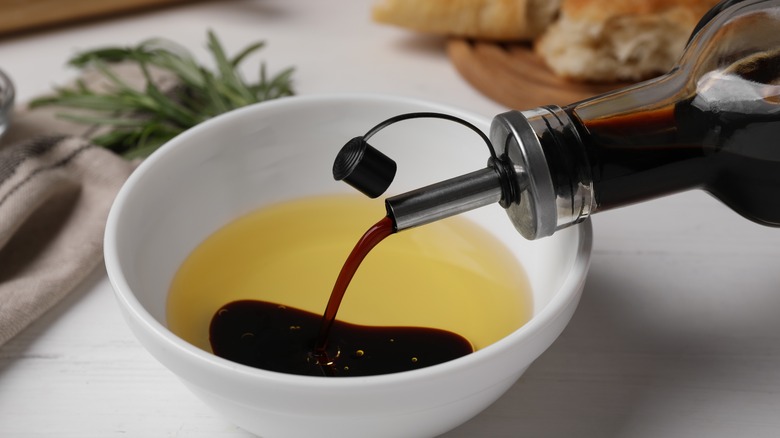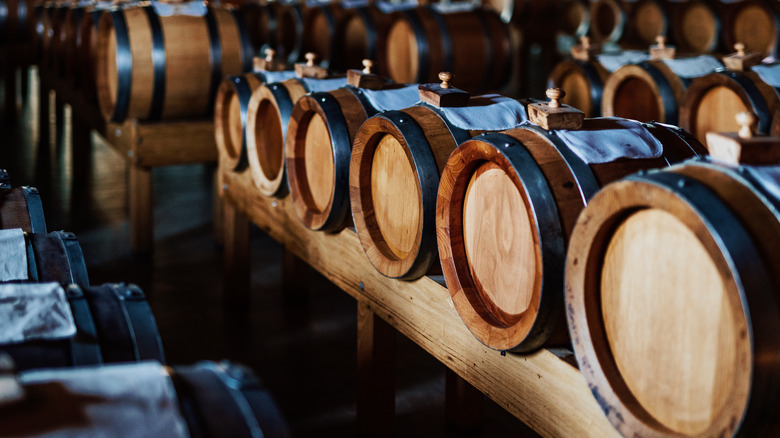Do You Actually Need To Store Balsamic Vinegar In The Dark?
We may receive a commission on purchases made from links.
Balsamic vinegar is a great way to add a punch of flavor to everything from chicken wings to a simple salad. However, it doesn't take a lot to flavor a dish, so a bottle can last a long time, depending on how frequently you use it. Naturally, this means you'll have to store it somewhere, and that place should be both cool and dark.
Yes, even though balsamic vinegar technically doesn't spoil, as bacteria can't grow in it due to its high level of acidity, it still has to be stored properly to maintain its quality. Heat and light are the worst offenders and can degrade the complex flavor of balsamic and force it to lose its quality. Because of this, bottles of balsamic should be kept away from windows and shoves, and even shelves and cabinets near stoves where radiant heat can impact them. If you prefer to use balsamic as a dressing for salad and like it chilled, it can be stored in the fridge. That said, if you refrigerate your balsamic, it should be used relatively soon, as condensation can form on the inside of the bottle, causing the flavor to become diluted.
While balsamic is remarkably shelf-stable when stored properly, that doesn't mean you should keep it for decades as balsamic doesn't continue maturing once bottled, so you won't improve its flavor by letting it sit. It's recommended to use balsamic vinegar within five years to ensure the best quality, even though it will still be safe to consume after that point.
Not all balsamic vinegar is made equal
Although all types of balsamic benefit from being kept in cool, dark places, that doesn't mean they're all made the same way. In fact, traditional balsamic is strictly regulated and can only be made in Modena and Reggio Emilia, Italy, neighboring cities in the Emilia-Romagna region. Every part of the production process for traditional balsamic is supervised, and the vinegar is aged for years in wooden casks like a fine scotch. When a balsamic is traditional, you'll be able to tell on the label because it will say "aceto balsamico tradizionale" alongside a D.O.P. stamp, a European Union verification.
On the other hand, there is condimento balsamic, which is either made with less restrictive oversight or without proper aging. This type of balsamic often will feature an I.G.P. stamp from the EU or a seal of Consorzio Balsamico Condimento, a consortium that protects balsamic vinegar made in Modena. Likewise, there is balsamic vinegar of Modena, which is guaranteed to be processed in Modena, though the grapes can come from anywhere to meet the high demand. Colavita's Signature Edition Balsamic Vinegar is a good example of this, as is Costco's brand of balsamic made by Acetum. Along with the difference in where the grapes are from, Modena I.G.P balsamic is aged for a shorter period and can have colorants or thickeners added.
Of course, there is also imitation balsamic, which is usually wine vinegar spruced up with colors and sweeteners. These can be produced anywhere and are much more affordable than products from Italy. However, they still work great for marinades and dressings and are good to have on hand.

